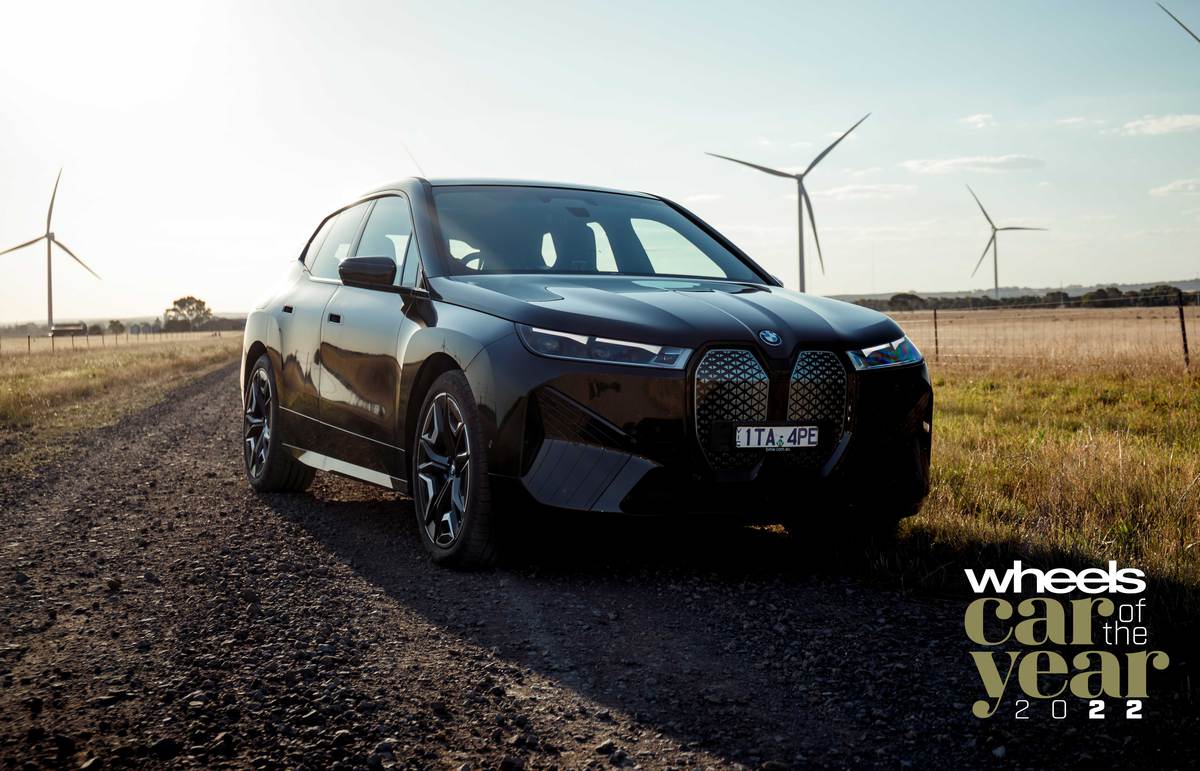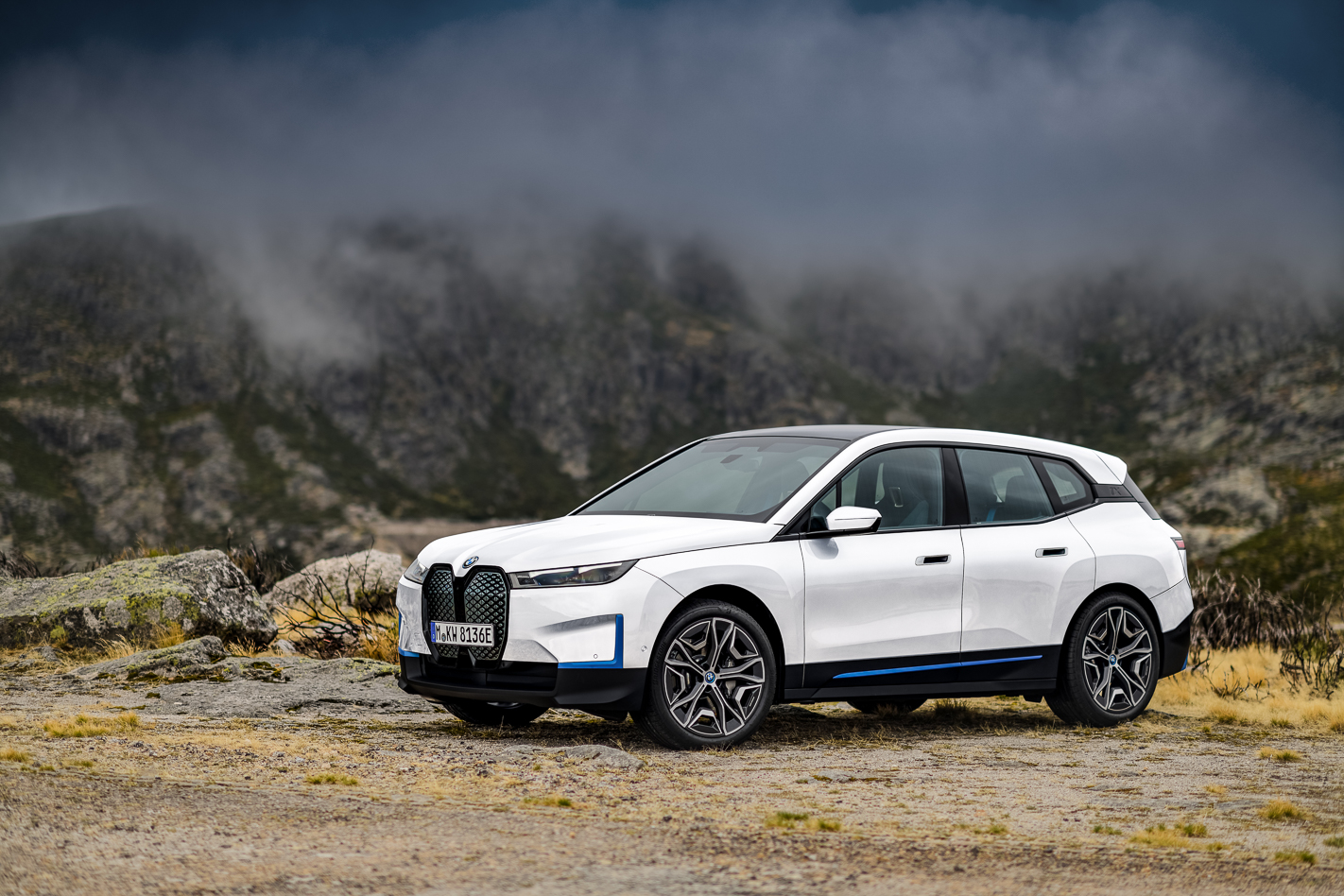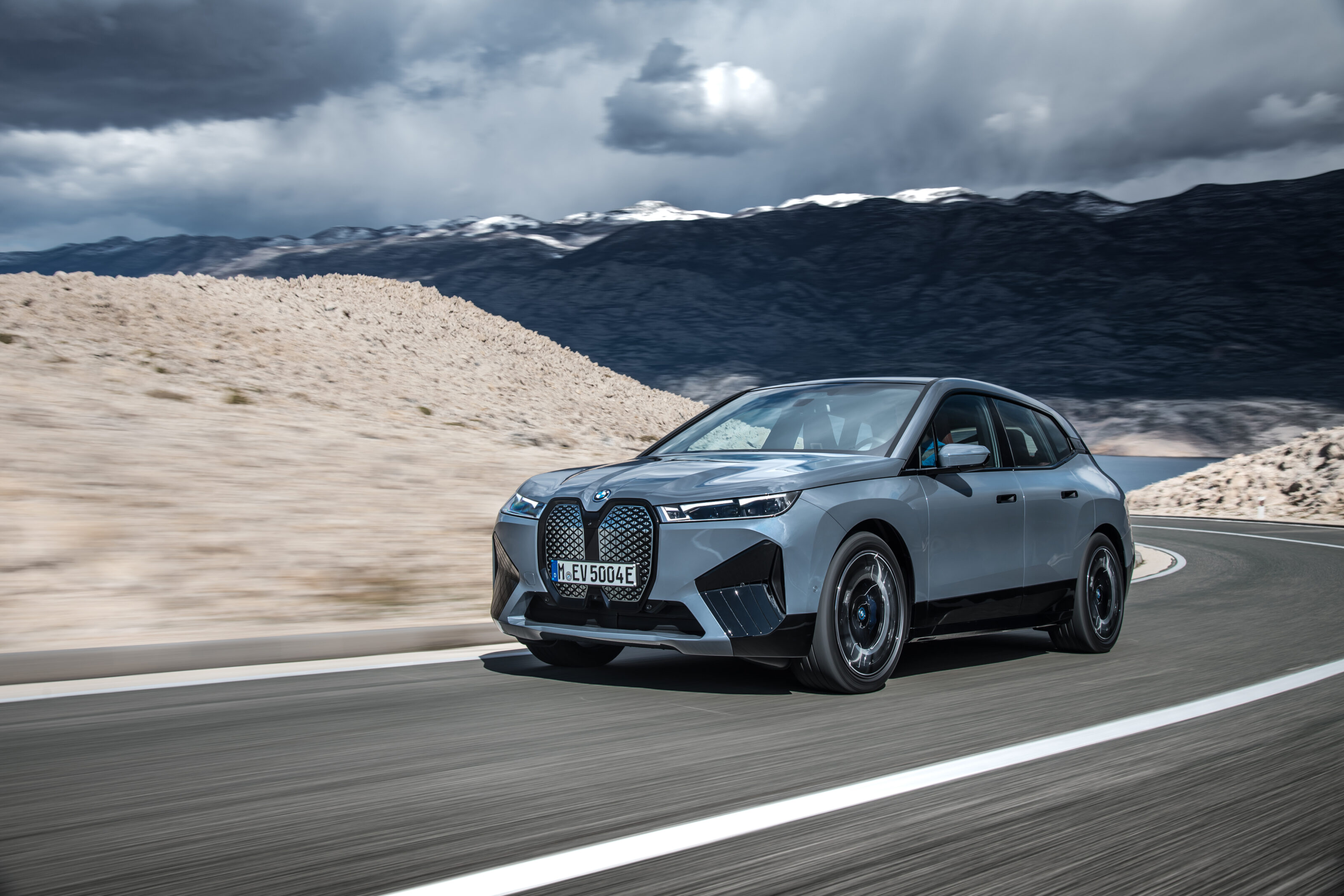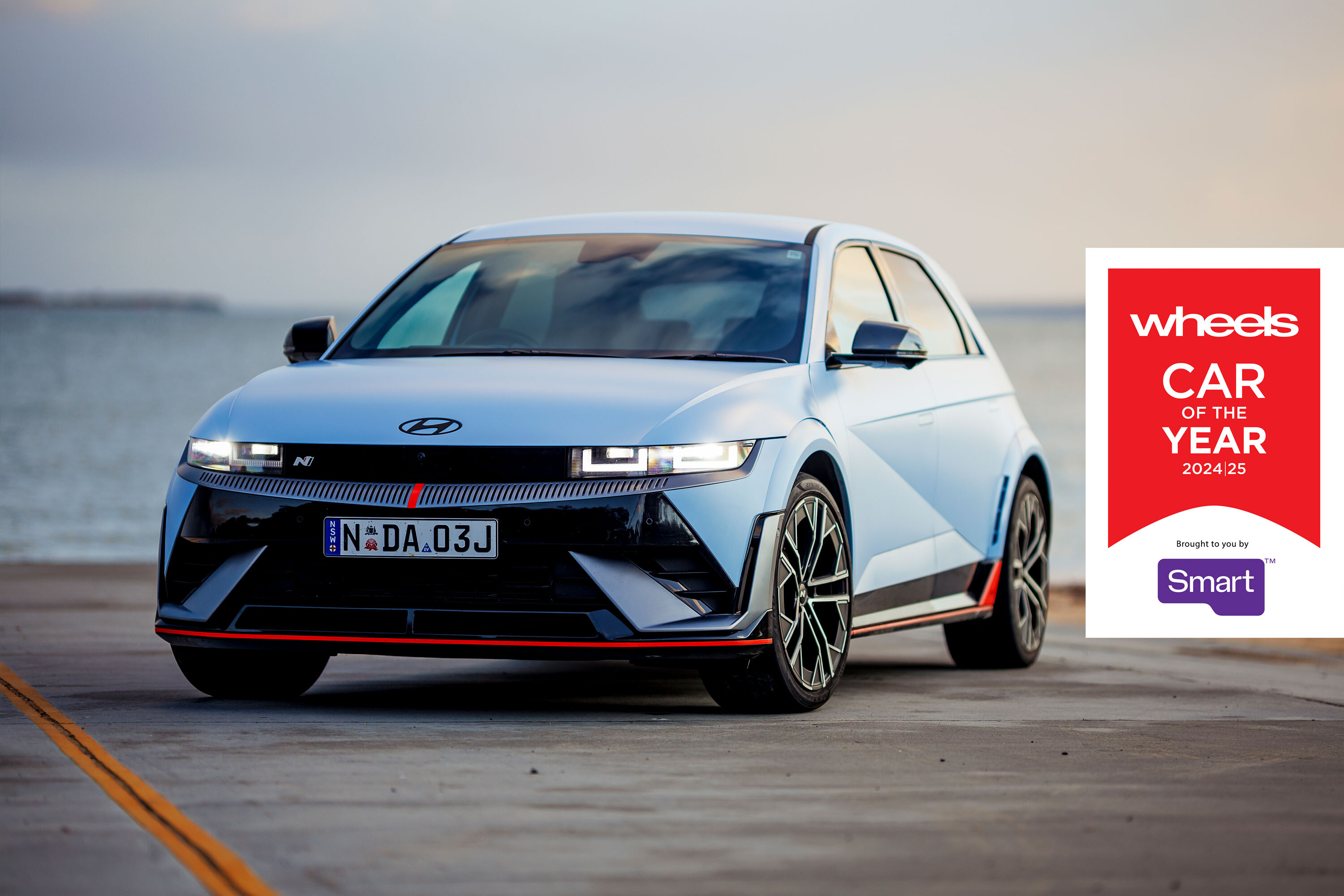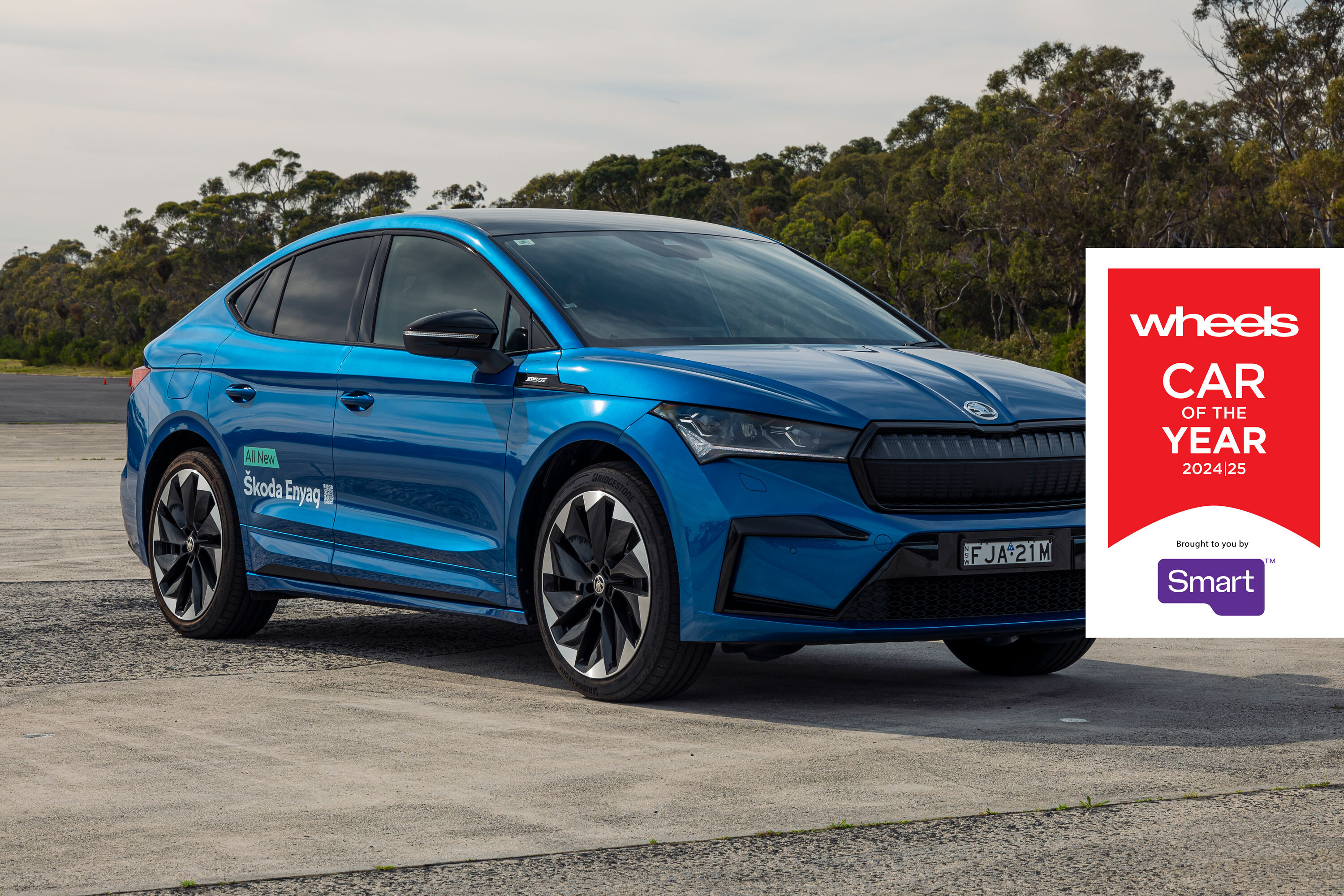BMW’s first electric car went all the way at the 2014 Wheels Car of the Year, and arguably proved to be a hatchback ahead of its time.
The German brand’s second battery vehicle effort, the iX, arrived at COTY 2022 with hopes of replicating that achievement while enjoying a more opportune existence.
Such is its newness to market, the iX was another of the field’s untested wildcards. The variant made available for testing was the entry-grade xDrive40 in a Sport guise that adds a bodykit, performance brakes and 22-inch wheels. A mid-range xDrive50 featuring a larger battery and more powerful electric motors is also offered initially, with a range-topping M60 arriving later in 2022 as the first ever electric M car.
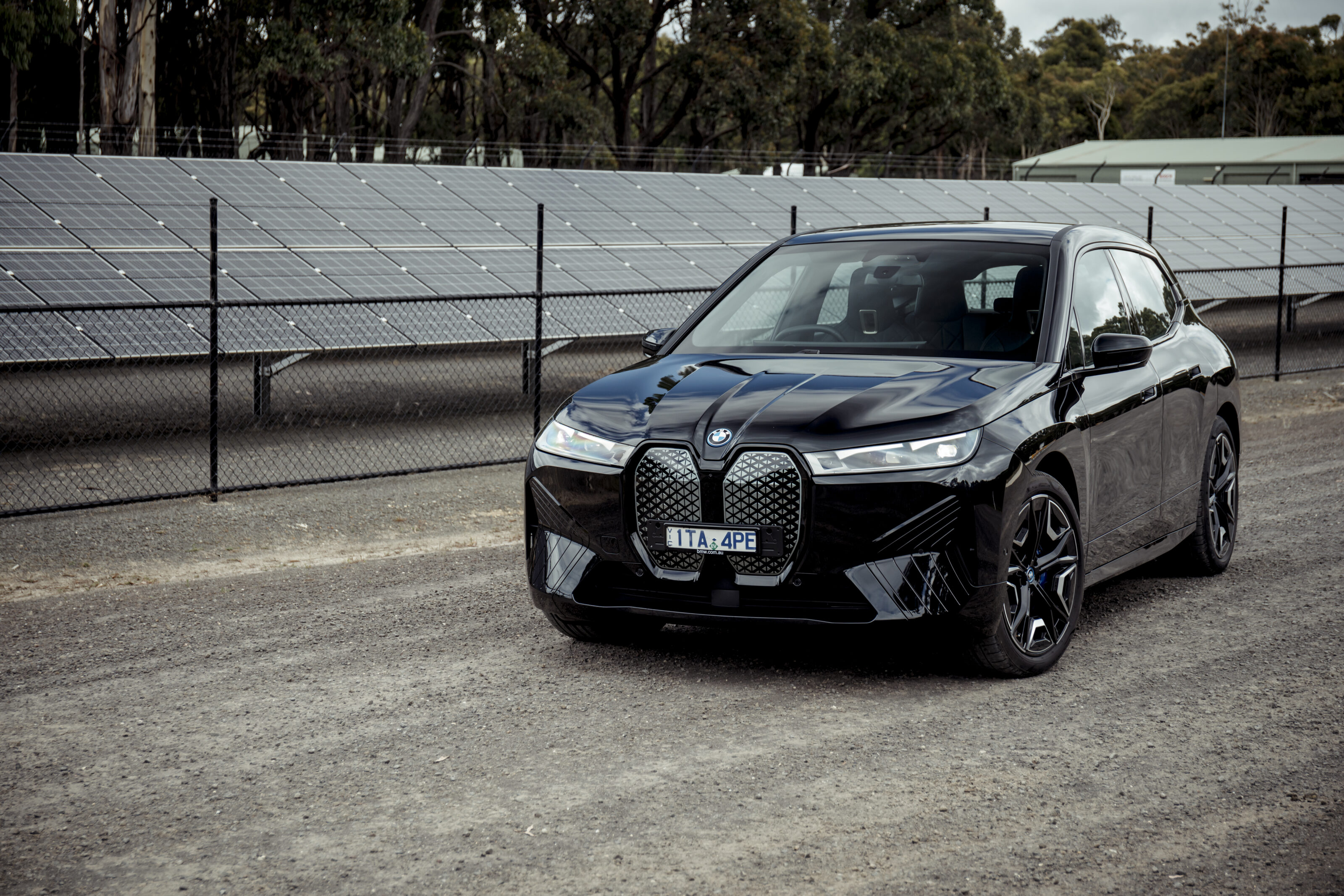
As a big SUV similar in size to the BMW X5, the iX is significantly more expensive than an i3 yet also right in the midst of a competitive group that includes the Audi e-Tron, Jaguar i-Pace, Mercedes-Benz EQC (our 2020 COTY winner), and Tesla Model X. This meant a starting price of $135,900 for the xDrive40, or $141,900 for the xDrive40 Sport, didn’t immediately harm the iX’s chances against the Value criterion.
BMW has also thrown in five years of complimentary Chargefox charging, and the German marque certainly hasn’t scrimped on its investment in the iX’s construction, either. Based around the company’s CLAR cluster architecture, an aluminium spaceframe chassis is combined with a ‘Carbon Cage’ utilising carbonfibre-reinforced plastic for reduced weight and increased rigidity.
As with BMW’s former i-badged models, including the i8 hybrid supercar, there is exposed CFRP when you open the doors. Yet you would be excused for missing it as eyes are drawn to what is BMW’s most successfully ambitious cabin since the i3.
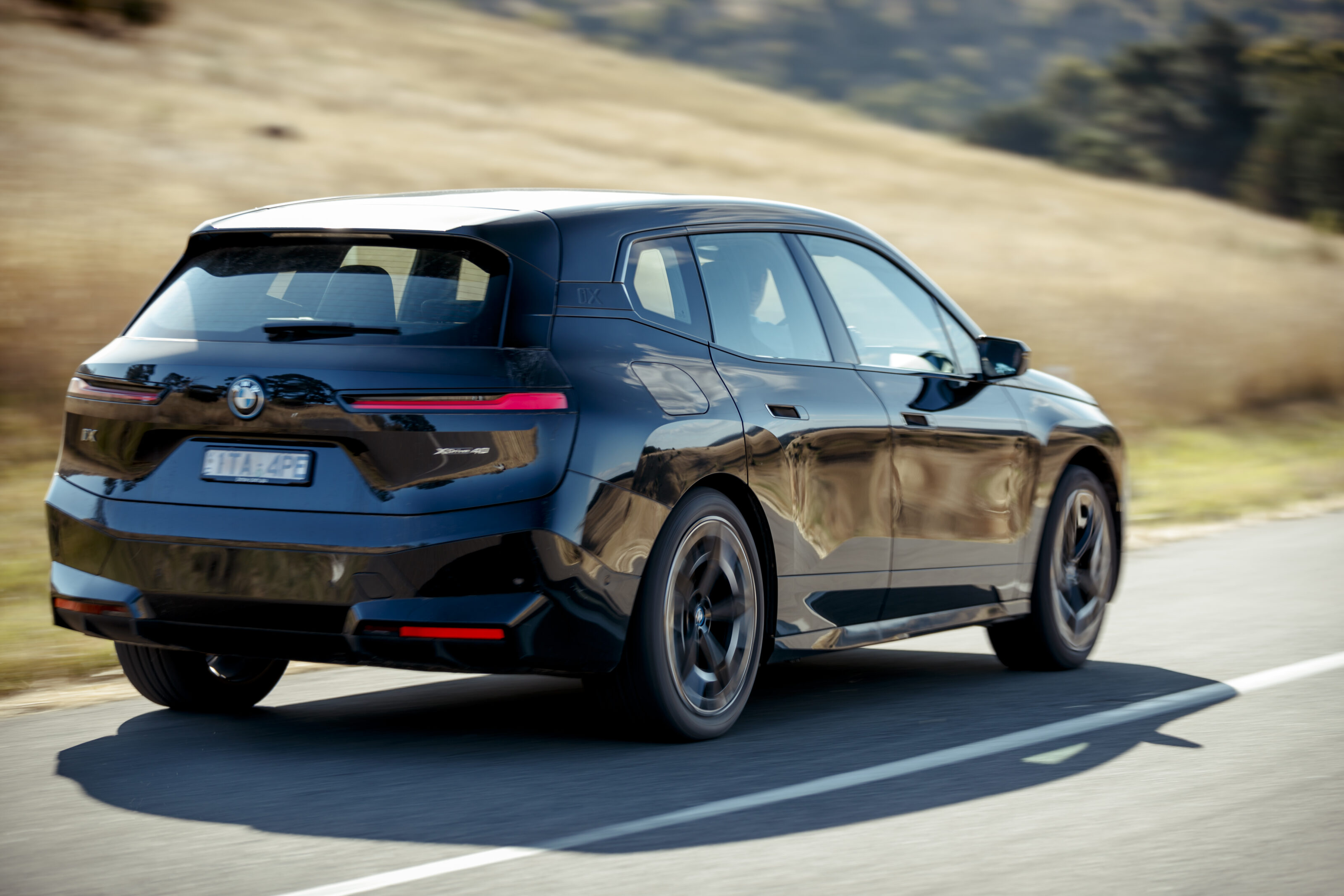
Accessed via frameless doors with additionally distinctive door-handle slots, the interior’s stylish minimalism, vast space and array of tactile textures are all notable – though not to the extent of the crystallised seat controls and gem-like console dial that suggest BMW’s interior designers raided a Swarovski store.
Curt reckoned the cabin had an “ostentatious futuristic vibe”. Alex agreed. “Interior has so much wow factor. Some of it strays into OTT territory, but I imagine it will blow people away in showrooms.”
“A weirdly compelling cabin that’s different but not just for the sake of being different. It’s a show-stopping interior that manages to be stunning while avoiding gaudiness,” said Dan. Design guru Richard joined the fan club, describing the approach as “intentionally pared back and minimalist, but with premium materials and excellent execution”.

“Plenty of wow factor and powertrain punch, but chassis tune falls short” – Alex Inwood
The iX doesn’t disappoint on space, with tonnes of headroom front to back and copious amounts of legroom – the latter aided by a three-metre wheelbase that’s 28mm longer than the X5’s. Three adults comfortably fit across the second row, too.
The proving ground was the first opportunity to sample various technologies. The vast and sharp HUD impressed along with the augmented-reality nav guidance, though not every judge was enamoured with the behaviour of the BMW’s electronic aids on the dirt section.
The hexagonal steering wheel, meanwhile, is certainly novel but was considered a design step too far.
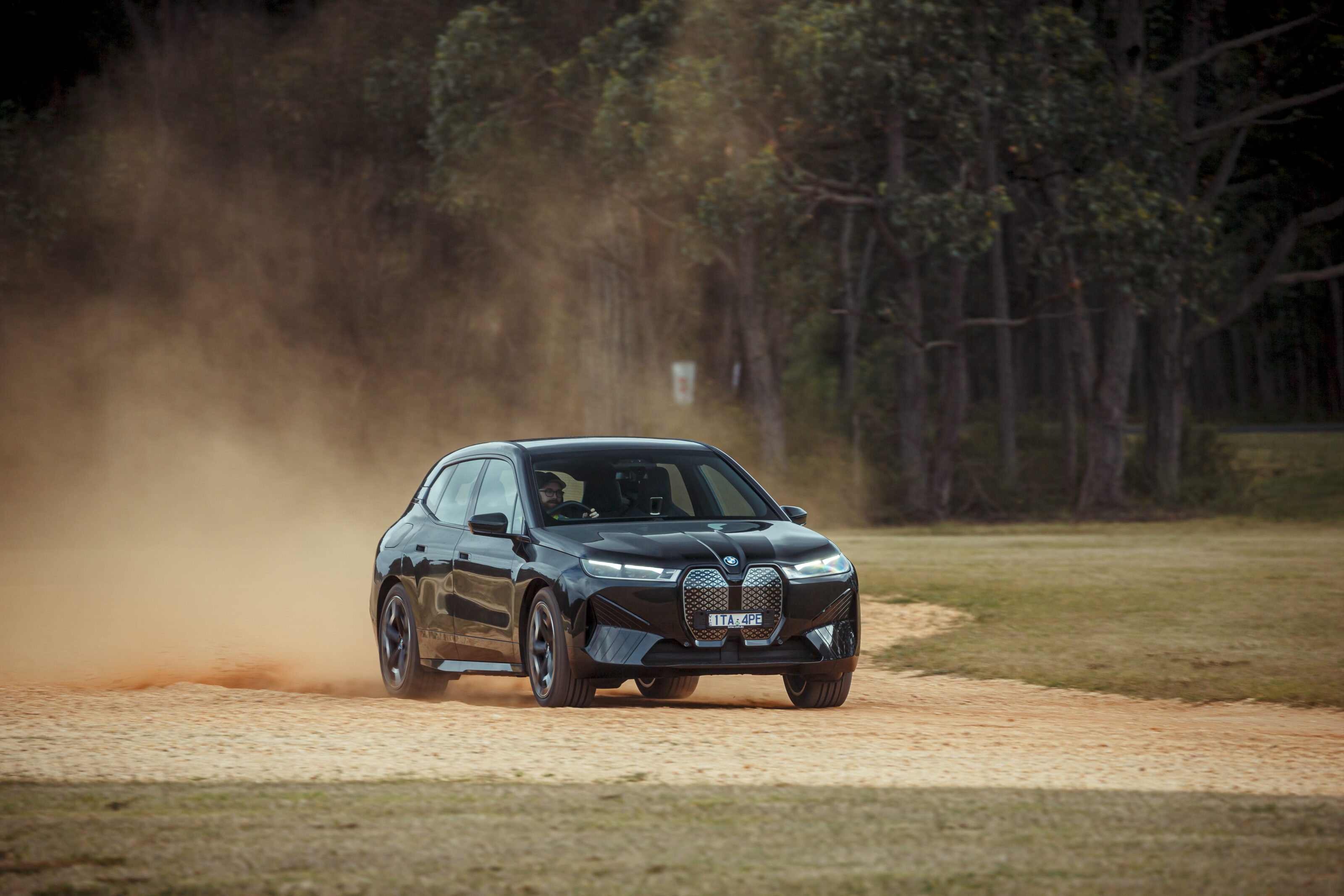
The iX itself, though, was considered worthy of taking the next step, securing sufficient votes to reach the finals stage.
A 77kWh battery resides at the heart of the xDrive40 variant, delivering 425km in WLTP-rated range and powering front and rear electric motors that produce a combined 240kW and 630Nm. That range is in the ballpark rather than being remarkable in the context of direct rivals, while quoted acceleration of 6.1 seconds puts it towards the bottom of the pack for the 0-100km/h sprint.
A best-variant case could be made for the xDrive50 that uses a 112kWh battery and more powerful dual motors to expand range to a Tesla Model X-trumping 630km and shrink the 0-100km/h time to 4.6 seconds that’s second only to the American SUV. The catch is a sizeable price-tag jump to $169,000.

Yet a lack of speed was never raised as a concern for the xDrive40. “Benignly fast in a straight line and corners,” said Dan, essentially as a proxy for the entire group.
Judges all noted the iX’s eery yet impressive quietness, a vehicle that belies its bulk to slip through the air with a segment-leading 0.25 coefficient of drag, and one that was riding on special noise-reducing rubber.
Excellent vision is afforded by the expansive windscreen, tall side glass, and helpfully sized rear window. And no-one heckled when I suggested the iX’s front seats were second only to the S-Class’s for pampering comfort.
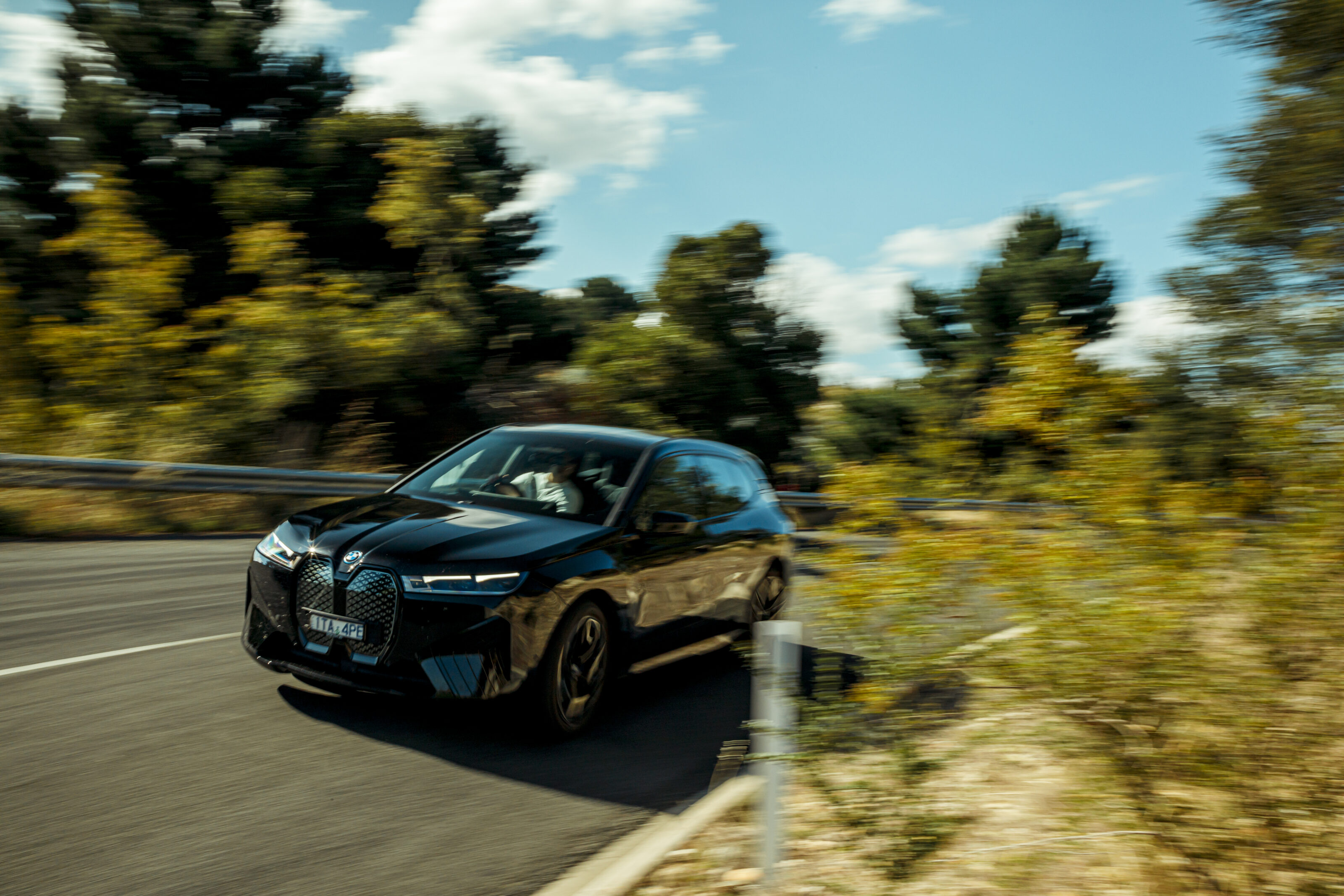
In the harsh light of a brighter day for the road loop, though, some form-over-function quirks were exposed. Centre console controls were hard to read, while further seat time didn’t bring anticipated improvements in the understanding of various controls and interfaces.
“The user interface, in places, is clumsy and unintuitive,” said Curt, going on to cite the console controller array, drive mode selection, and regen-braking adjustment as examples. Dylan reflected some general disappointment with the new-generation iDrive 8 that debuts here. “If you showed the iX’s infotainment system to a lawmaker, they’d figure out a way to ban it immediately. Requires a PhD to operate.”
Our challenging, real-world road loop also highlighted some chinks in the iX’s dynamic armour not so apparent at the proving ground. These included a restlessness to the ride that wasn’t experienced with any of the other finalists across the loop’s long stretches of country roads. Would the xDrive50 with its standard air suspension have fared better?
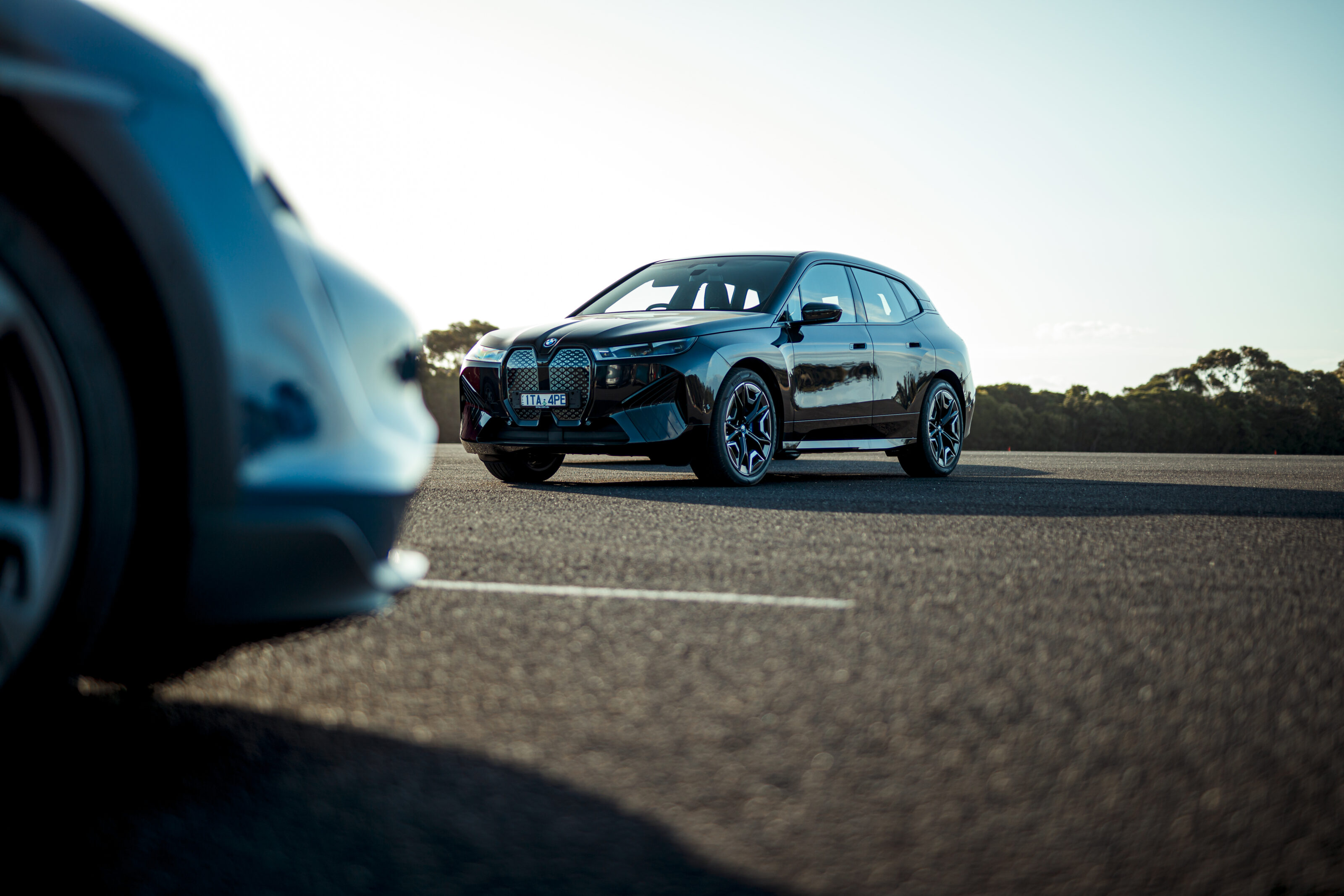
There’s also disappointment for any BMW fans longing for an electrified equivalent of the brilliant-handling E70 X5.
“Dynamically, it feels like you’ve got five burly blokes on board, a tank full of fuel, and a bootful of gear … except it’s just little old you in the car,” said Dylan.
Yet if the iX didn’t quite live up to the expectations of the traditional BMW driving experience, it delivers in many other ways as a fitting flagship for the German brand’s EV line-up.
We recommend
-
 News
News2022 BMW iX Australian specification revealed
BMW’s next generation of electric vehicles will arrive on scene in late 2021 in a two-strong line-up
-
 News
NewsBMW iX local pricing and features revealed
Munich’s new-generation electric SUV due for local launch in quarter four of 2021
-
 News
News2025 New Car Calendar: All the new cars coming to Australia
Take a look at our list of what is expected to launch in Australia in 2025 – plus those we might not see locally just yet


